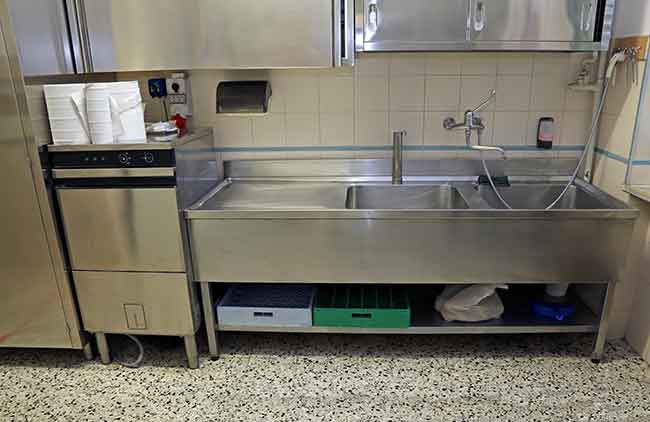
The ‘DOUGHs’ of pest control
April 28, 2016
By Alice Sinia
Here are five steps you can take to ensure pests and rodents don’t become a food safety and sanitation problem for your bakery.
 Photo: Fotolia
Photo: FotoliaWhen you think about it, ovens are a major source of income for bakeries. Without ovens and other tools of the trade, you would have no product to sell and your customers wouldn’t enjoy your secret family recipe. Your oven and other kitchen equipment often provide pests with the food they need to survive and thrive. To help protect your food, reputation and bottom line, consider using an integrated pest management (IPM) program.
An IPM program is the most effective and environmentally conscious approach to pest management. It focuses on proactive sanitation, habitat changes and facility maintenance, reducing the need for reactive treatments. An IPM program is not a one-time event, but rather an ongoing process. That means a deep clean is needed periodically to ensure a healthy environment for your customers.
Keep these ‘DOUGHs’ of deep cleaning in mind.
Documentation: As far as health inspections go, if something isn’t documented, then it didn’t happen. Keep up-to-date records of all facility maintenance and sanitation steps. Some pest control providers offer digital record keeping of pest sightings, treatments and other key data points. You should also keep your own records.
Organic cleaners: Consider using an organic cleaner that breaks up the grease and grime that pests like flies can feed on and breed in. These cleaners use naturally occurring enzymes and beneficial micro-organisms to break down the trapped dirt, muck and food particles that can attract flies and provide breeding grounds. In fact, the areas hardest to clean are often the most conducive to pests’ needs. These areas include floor drains, sink drains, equipment footing, and grease traps.
U = your sanitation plan: Again, IPM is not a one-time event, but an ongoing process that requires the effort of your entire staff. Your plan should define specific roles and responsibilities to establish a routine. For example, you can build a checklist of duties to be conducted before checking out every night. Staff training on how to look for and report pest sightings is also beneficial – some pest management providers offer training at no extra cost.
Get every single inch: While this might seem like a no-brainer, you should be sure that your efforts aren’t wasted by cutting corners. Clean behind the oven. Check under the fridge. Rodents only need a few drops of water to survive and roaches are experts at finding hidden food particles.
Hot spots: No two kitchens are alike, but they share common pest hot spots and entry points. Examples of hot spots include the dishwasher area, dry storage, staff lockers and under prep counters. While it is important to focus on your kitchen, you should also inspect your building’s perimeter. Limit the vegetation and trim tree branches that may have grown against your building. By creating a vegetation-free barrier of at least one metre, you can keep foliage from providing cover and hiding potential pest entry points. Additionally, you can help deny pests entry by sealing all cracks and crevices in the walls, floor and pavement with weather-resistant sealant. It is also important to regularly clean your trashcans and dumpsters.
Pests are often overlooked until there is an infestation or crisis. A strong deep clean can help reduce your risk, but an IPM program is the best way to protect yourself. Work with your local pest control provider to set up a program that is specific to your facility, local pest pressures and other external factors.
Alice Sinia, PhD, is the resident entomologist, regulatory/lab services, for Orkin Canada, focusing on government regulations pertaining to the pest control industry. With more than 10 years of experience, she manages the Quality Assurance Laboratory for Orkin Canada, performs analytical entomology and provides technical support in pest/insect identification to branch offices and clients. For more information, email Alice at asinia@orkincanada.com or visit www.orkincanada.com
Print this page
Leave a Reply